Introduction
While you can train for Powerlifting in just your standard gym kit, competing, and in some cases optimal progress in your training will require you to buy some equipment. This page is here to give you some advice.
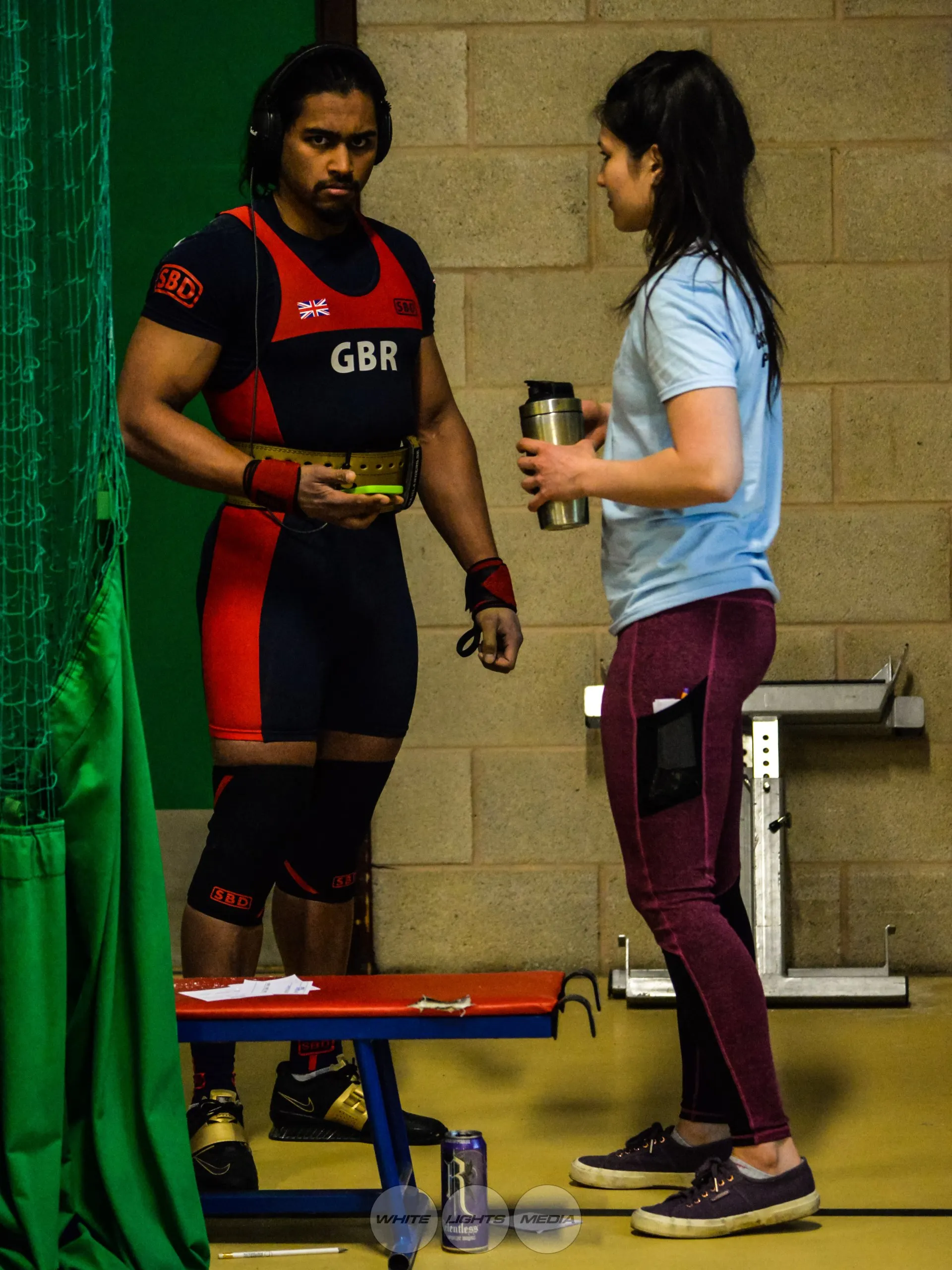
Here at CUPLC, most of the competitions we go to are IPF (International Powerliftering Federation) run. So first of all, make sure any equipment you buy is IPF approved if you want to use it at an IPF competition. You can check this here.
Singlet
Let’s start with the essentials. At any competition you’ll need to be wearing a singlet. There’s no training or strength benefit to these, it’s just important at a competition so that the body running the competition can regulate what you wear, in order to make sure everything’s fair and no one’s sneaking in some supportive gear that might give them an advantage. Also, a singlet makes it easier for judges to judge correct depth on a squat.
Since there’s no training benefit, you won’t need to buy a singlet until you compete at an official competition which can be whenever you want, although we do recommend diving into competing early.
When you do choose to buy one, we’d recommend either the SBD (£60), Titan (£60), A7 (£60) or StrengthShop (£40) singlets. The strengthshop is the cheapest and will absolutely do the job, so it’s probably what I’d recommend to most people starting out, although the ohters may last you longer if you plan to compete regularly and so be a better investment in the long run.
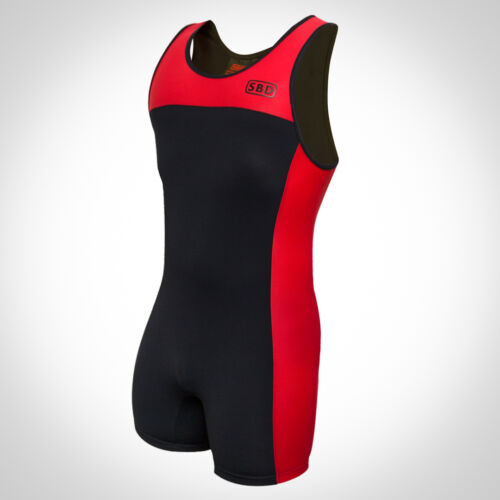


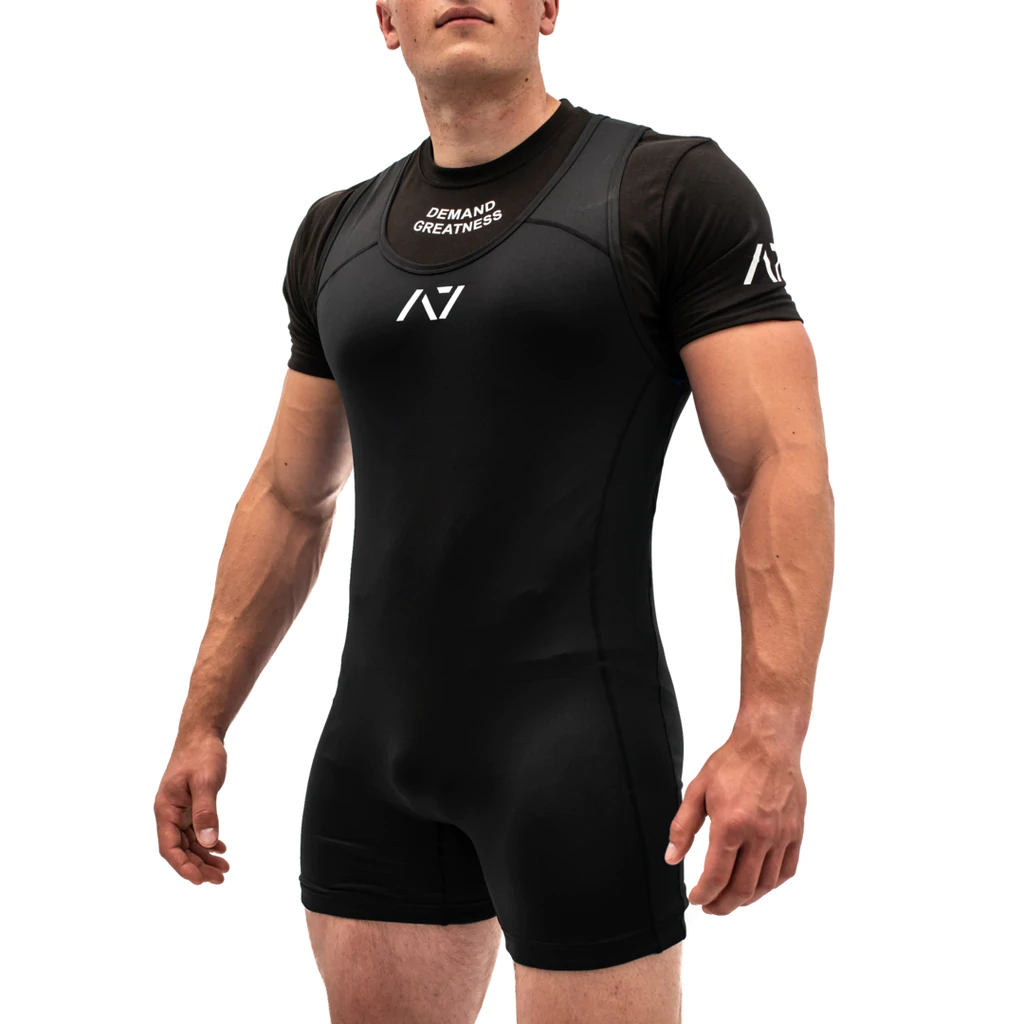
Belt
While a singlet is all you technically need at a competition, there are certain types of equipment which are foundational if you want to perform and train optimally. While even some top lifters do choose to compete belt-less, they are definitely in the minority, and a belt is the first item of training equipment I would recommend to anyone. This is because a belt allows you to train more safely and makes it easier to learn proper bracing and breathing technique. Belts may be expensive, but a good belt is an investment that can last you many years.
Key traits to look at when assessing a belt are:
- Width - The maximum allowable width in the IPF is 10cm and this is the width most Powerlifting belts will be made to. However, it is possible to get narrower Tapered belts for shorter lifters, who may find these more comfortable fitting between their hips and ribs.
- Thickness - Most Powerlifting belts are offered in either 10mm or 13mm thickness. Either is allowable by the IPF. A thicker belt is slightly stiffer, but may take longer to break in and be uncomfortable for smaller/narrower waisted lifters.
- How it is secured - There are 3 possible ways to secure a Powerlifting belt: single prong, double prong and lever. At the end of the day it doesn’t really matter which one of these you pick. I personally own a single prong belt because it’s slightly easier to fasten than a double prong one, and lever belts can be a hassle to adjust with changes in bodyweight depending on which you get.
- Material quality - Avoid lower quality belts that feel more like plastic. Ideally, you want belts made of Top Grain Leather or Sole Leather as they will last you the longest.
My Recommendations:
- A Strengthshop lever belt (£63) is one of the cheapest if you’re on a tight budget and will do you just fine, but since a belt is an investment, you may as well get a really good belt at the start, rather than a mediocre one which you will inevitably want to upgrade from sooner or later. Watch out here because only their lever belt is IPF approved.
- Inzer Belts range from £60 all the way up to £140 and are a very solid choice and probably give you the most bang for your buck. It can be hard to find them in the UK without having to pay extortionate shipping costs. You could try searching Amazon for the best deals, or use their German website (linked on the picture below).
- If you wanna invest in something really solid (literally), the SBD belt is £165. It’s pricey but is really tough and will definitely last you a long time. It’s a lever belt but it doesn’t require you to unscrew it to adjust the size.
- Finally, if you want a fancy, gold personalised belt like the one Sal is wearing in the photo above, Wahlanders may be the place to go. They’re a very small company who make leather products, run by a couple in Sweden. They hand make all their products and I have to say, their Powerlifting belts are beautiful and very well made. Their belts come in at about £160. If you want them customised you’ll have to order from from the Swedish website, or you can get them from Pullum.



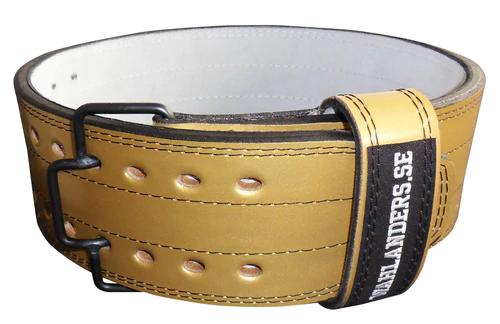
Shoes
The IPF have no regulation on which shoes you need to wear to an IPF-approved competition, although they do require that you wear some sort of footwear for each lift.
You may be sad to learn that your running trainers are actually hindering your squat. Trainers are designed to absorb impact when you’re running so minimise the stress on your joints and tendons, but that’s precisely the opposite of what we want in a squat! Squishy shoes will only act to absorb to energy you’re putting into the ground and making your squat slightly weaker. For this reason, although Powerlifting shoes aren’t essential, they are recommended if you want to train and compete optimally. Firstly, when it comes to squatting, you’ll need to work out if you want to squat in flat or heeled shoes.
Heeled Shoes
Powerlifting shoes generally have an effective heel height of, on average, 0.75” and about 1” maximum. They have a study sole which provides a stable platform to push against, and the elevated heel creates extra dorsiflexion in the ankle, making it easier to hit depth. Whether you choose heeled or flat shoes depends on whether you have the ankle mobility to hit depth in flat shoes or not and most people do not when they start out. I’d recommend only wearing your Powerlifting shoes in the gym, when you’re about to squat or possibly bench, so that they last as long as possible. They are many shoes you could go for but a good, relatively cheap choice for a beginner is the Adidas Powerlift 3.1 (£85, although you may be able to get them cheaper on Amazon. Heel height: 0.59”). Other, more high end options include the Nike Romaleos 3 (£170. Heel height: 0.79”), and AdiPower IIs (£160. Heel height: 0.79”) - the original Adipowers are also good but are hard to find nowadays. These shoes have more solid, TPU heels, giving you more transmission into the ground than the rubber Powerlift 3.1s, but the Powerlift 3.1s are therefore easier to move around in and so are recommended for sports like crossfit where you’ll need to both lift and move around a lot.
Flat shoes
If you want to lift in flats, since the only requirements are that they don’t have padding on the bottom so you’re pushing against a hard surface, and that they have enough grip that you won’t be slipping around on the platform, almost anything will do. It’s not uncommon to see lifters at competitions using old converse shoes. However, I’d recommend getting some Adidas Havoc Wrestling Boots (£50), since they also provide some ankle support. Even if you have heeled shoes for squats, you’ll want some flat shoes for deadlifts, since that extra dorsiflexion will only serve to tip you forward and disrupt your start position in a deadlift. If you want to save money by only buying one pair of shoes you can get some Strengthshop deadlift slippers (£10) which are allowable in a competition. They’re fine for a conventional deadlift but I wouldn’t recommend these for a sumo deadlift, since they offer no ankle support and your foot tends to slip out the side of them, taking away from your power off the floor.
When it comes to buying from Adidas and Nike, it’s worth signing up to their emails and waiting to see if any sales come around - because they can have big 30%+ discounts if you’re lucky. Also check Unidays for student discounts (can often be as much as 30%). Finally, we have an Adidas CUPLC discount store where the prices are often reduced by about 30% as well. The stash officer will need to do a big bulk order (which they normally do in Michaelmas and perhaps one later in the year if there’s enough interest) - look out for those emails if you’re interested.
Adidas Powerlift Adidas Powerlift 3.1 AdiPower II Nike Romaleos 3 Adidad Havoc Adidas Havoc Wrestling Boots Deadlift Slippers Strengthshop Deadlift Slippers
Knee Sleeves
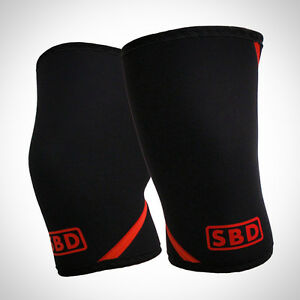
Knee sleeves are by no means essential for training but the extra knee support instantly adds 5-10kg to your squat for a competition, and again they’re a piece of equipment that can last a long time, so they’re a good investment if you’re planning on competing. They also warm the knee and help to prevent knee tendonitis in training. I’d be remiss to recommend any knee sleeves other than the SBD ones (£60). There are other knee sleeves out there but the SBD ones are made to the maximum allowable thickness and durability that the IPF allows, so they can’t be beaten, and for that reason you’ll see almost every lifter at a competition wearing them. Go for the smallest size you can feasibly get on, as the tighter they are, the more support they give you and the stronger your squat will be. Also they tend to stretch a little over time.
Wrist Wraps
Wrist wraps are not essential and whether you buy them or not is up to you. They do help to give some support to your wrists in the bench press and will give you some extra strength and add some safety at the heavier weights. They can also be used in the squat, since a low bar squat position can put pressure on the wrists. If you want to buy some, SBD (£30) are again a very good choice. Titan (£17) also offer some cheaper and very sturdy wrist wraps. Some of the best wraps out there are probably Gangsta wraps (£45), made by Mark Bell and Slingshot.
You can choose your length and often whether you want the wraps to be stiff or flexible. Stiff wraps may offer more support but flexible wraps may be more comfortable and mould to the shape of your wrist better.
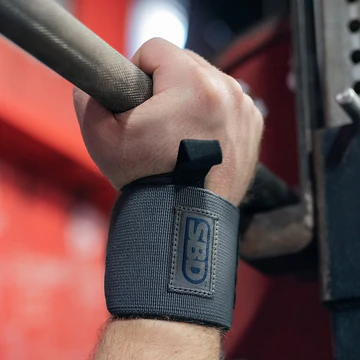
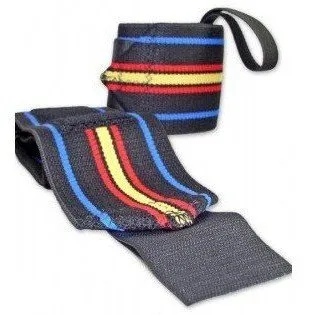

Other
Chalk
Chalk absorbs moisture and helps you to grip a barbell, particularly if your hands are starting to get sweaty. Chalk is allowed in competitions, and you can get a lot of pretty cheap chalk blocks from Strengthshop (£11). I’d recommend chalk blocks over liquid chalk because it gives you more grip, although chalk blocks can be messier.
Straps
Straps strap your wrist to the barbell to give you more grip in movements like heavy deadlifts. However, they are not allowed in competitions, and so if you do buy them they will only be useful in training. If used too often, you can become reliant on them and neglect to build up your grip strength, so I’d recommend only using them sparingly in training. That being said, they can be useful if you’re on your 7th set of deadlifts and your forearms are shot but your back and hamstrings can still keep going. They can also be useful for snatch grip deadlift variations or any movement where you need to use a double overhand grip, such as heavy rows. There are 3 main types of strap design:
- Single Loop straps loop around your wrist and then wrap onto the bar. They offer the least support of all the strap types but do allow you to let go of the bar easily if needed, and so can be useful if you want to use them for something like power cleans
- Lasso straps are the most commonly seen straps in the gym. They have a loop that goes around your wrist and then a free end that you wrap around the bar. They offer more support than single loop straps but still can loosen and fall out of your hand
- Figure of 8 straps are my personal favourite if you’re not using them for a movement where you’re going to need to drop the bar. These straps have 2 loops. They loop around your wrist, hook around the bar and then the second loop loops around your wrist again. It’s pretty much impossible to drop the bar with these things on.
Since you’ll probably only use them sparingly in training, I personally wouldn’t recommend getting expensive straps, although if you wanted some higher end ones, Rogue do some for ~£18. Otherwise just find some on Amazon for about £7.


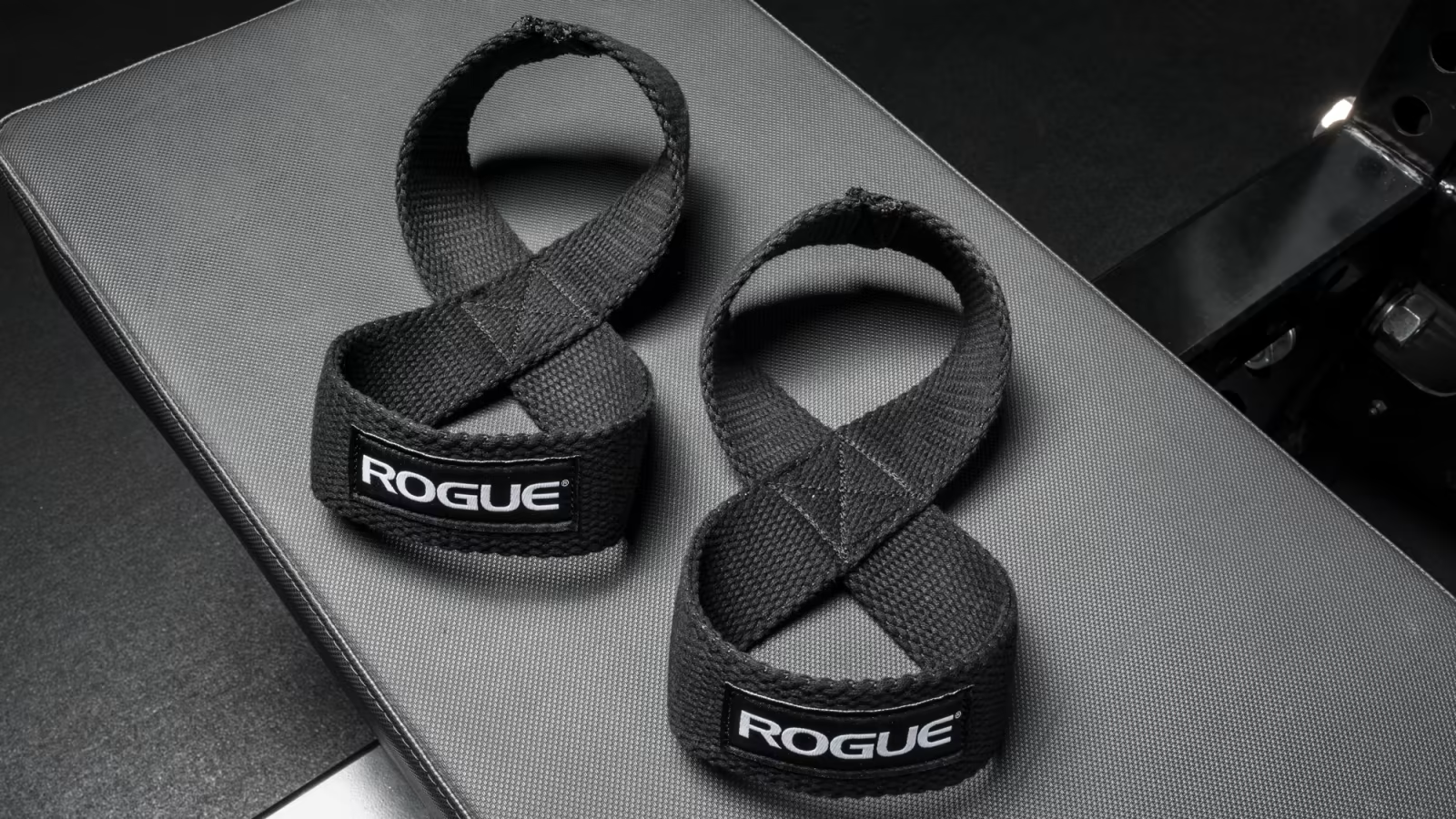
Summary
If the cost of all this equipment is making your head spin, please don’t worry. This guide is only here if you want to buy equipment and don’t know where to begin. Remember, the only essential pieces of equipment to compete are a singlet, some type of shoes and long socks. If you do want to buy more equipment but you’re concerned about the cost, and you think you’d like to continue Powerlifting for the foreseeable future, I still wouldn’t recommend buying the cheapest options, but rather, invest in good quality equipment that will last, and buy one at a time over a longer period of time. Also check to see if your college awards any sports grants. There are also some University grants such as the Eric Evans fund, although they are generally harder to get.
Finally, if you’re sat there thinking “yeah yeah all this stuff that will help me lift is cool, but I wanna look fly doing it” then make sure to check out the various CUPLC stash stores, emailed around each year by the Stash Officer.
Disclaimer
This page is NOT for retail purposes. Images are for illustration only. No copyright infringement intended.
